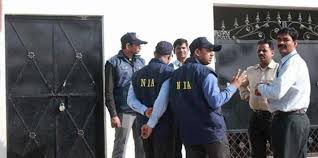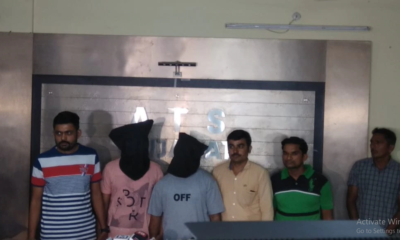Feature
Reliance Defence to maintain USN’s 7th Fleet ships
Mumbai: Reliance Infrastructure Limited (RInfra)-controlled Reliance Defence and Engineering Limited (RDEL) has signed the Master Ship Repair Agreement (MSRA) with the US Navy to maintain the vessels of its Seventh Fleet operating in the region, with the company estimating revenues of about Rs 15,000 crore ($10 billion) over next 3 -5 years. The Reliance Shipyard at Pipavav in Gujarat, one of the largest drycocks in the world, was qualified by as an approved contractor in January 2017 to perform complex repair and alternation services for the US Navy. The Reliance Shipyard is the first in India to have received MSRA Certification to undertake servicing and repairing work for the vessels of the Seventh Fleet. The fleet has about 100 vessels of different types including auxiliaries. Currently, these vessels visit Singapore or Japan for such works.
“Reliance Shipyard has been selected after a detailed site survey by US Government representatives in end October 2016,” an RInfra satement said, adding: “This selection by the US Navy is a true recognition of the world-class facility, processes and the high standard of capability of Reliance Shipyard.” The MSRA is a spin-off from the Logistics Exchange Memorandum of Agreement (LEMOA) signed on August 30, 2016 during Defence Minister Manohar Parrikar’s visit to US. The negotiations for this had spanned over a decade. The LEMOA is a tweaked India-specific version of the Logistics Support Agreement (LSA) that the US has with several countries it has close military-to-military cooperation with.
The LEMOA gives both countries access to designated military facilities on either side for refuelling and replenishment. India and the US already hold large number of joint exercises during which payments are done each time, which is a long and tedious process. Pursuant to the signing of LEMOA, the US Navy is believed to have conducted survey of various shipyards in India before qualifying the Reliance Shipyard at Pipavav as the one qualified to undertake complex repair and maintenance work.
Entertainment
Meghalaya Reserves Legalized Gambling and Sports Betting for Tourists

The State Scores Extra High on Gaming-Friendly Industry Index
Meghalaya scored 92.85 out of 100 possible points in a Gaming Industry Index and proved to be India’s most gaming-friendly state following its recent profound legislation changes over the field allowing land-based and online gaming, including games of chance, under a licensing regime.
The index by the UK India Business Council (UKIBC) uses a scale of 0 to 100 to measure the level of legalisation on gambling and betting achieved by a state based on the scores over a set of seven different games – lottery, horse racing, betting on sports, poker, rummy, casino and fantasy sports
Starting from February last year, Meghalaya became the third state in India’s northeast to legalise gambling and betting after Sikkim and Nagaland. After consultations with the UKIBC, the state proceeded with the adoption of the Meghalaya Regulation of Gaming Act, 2021 and the nullification of the Meghalaya Prevention of Gambling Act, 1970. Subsequently in December, the Meghalaya Regulation of Gaming Rules, 2021 were notified and came into force.
All for the Tourists
The move to legalise and license various forms of offline and online betting and gambling in Meghalaya is aimed at boosting tourism and creating jobs, and altogether raising taxation revenues for the northeastern state. At the same time, the opportunities to bet and gamble legally will be reserved only for tourists and visitors.
“We came out with a Gaming Act and subsequently framed the Regulation of Gaming Rules, 2021. The government will accordingly issue licenses to operate games of skill and chance, both online and offline,” said James P. K. Sangma, Meghalaya State Law and Taxation Minister speaking in the capital city of Shillong. “But the legalized gambling and gaming will only be for tourists and not residents of Meghalaya,” he continued.
To be allowed to play, tourists and people visiting the state for work or business purposes will have to prove their non-resident status by presenting appropriate documents, in a process similar to a bank KYC (Know Your Customer) procedure.
Meghalaya Reaches Out to a Vast Market
With 140 millions of people in India estimated to bet regularly on sports, and a total of 370 million desi bettors around prominent sporting events, as per data from one of the latest reports by Esse N Videri, Meghalaya is set to reach out and take a piece of a vast market.
Estimates on the financial value of India’s sports betting market, combined across all types of offline channels and online sports and cricket predictions and betting platforms, speak about amounts between $130 and $150 billion (roughly between ₹9.7 and ₹11.5 lakh crore).
Andhra Pradesh, Telangana and Delhi are shown to deliver the highest number of bettors and Meghalaya can count on substantial tourists flow from their betting circles. The sports betting communities of Karnataka, Maharashtra, Uttar Pradesh and Haryana are also not to be underestimated.
Among the sports, cricket is most popular, registering 68 percent of the total bet count analyzed by Esse N Videri. Football takes second position with 11 percent of the bets, followed by betting on FIFA at 7 percent and on eCricket at 5 percent. The last position in the Top 5 of popular sports for betting in India is taken by tennis with 3 percent of the bet count.
Local Citizens will Still have Their Teer Betting
Meghalaya residents will still be permitted to participate in teer betting over arrow-shooting results. Teer is a traditional method of gambling, somewhat similar to a lottery draw, and held under the rules of the Meghalaya Regulation of the Game of Arrow Shooting and the Sale of Teer Tickets Act, 2018.
Teer includes bettors wagering on the number of arrows that reach the target which is placed about 50 meters away from a team of 20 archers positioned in a semicircle.
The archers shoot volleys of arrows at the target for ten minutes, and players place their bets choosing a number between 0 and 99 trying to guess the last two digits of the number of arrows that successfully pierce the target.
If, for example, the number of hits is 256, anyone who has bet on 56 wins an amount eight times bigger than their wager.
























